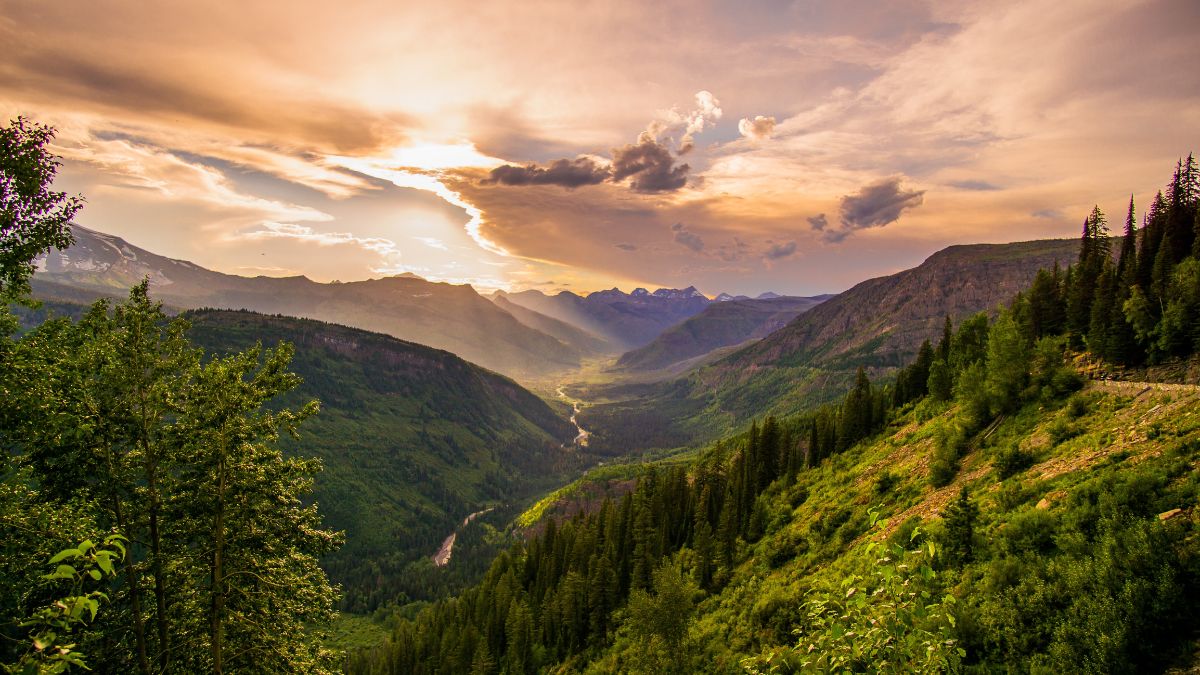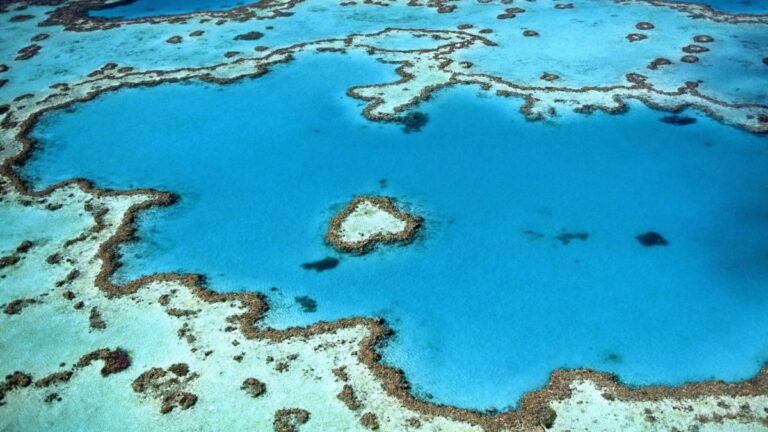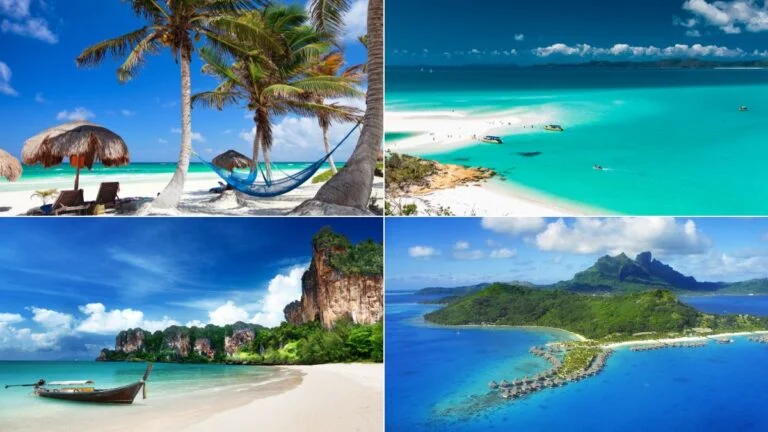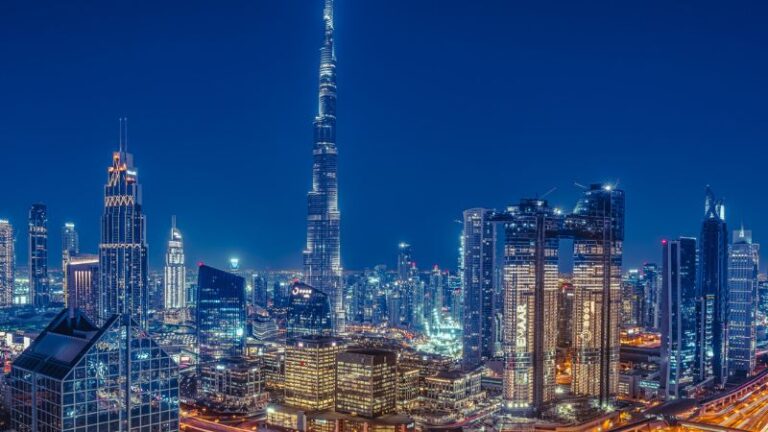Worst Time to Visit Montana: Cold Winters and Wildfire Summer Insights

As participants in Amazon Associates and other programs, we earn from qualifying purchases. This comes at no additional cost to you. For more details, see our Affiliate Disclosure.
Montana, often hailed as “Big Sky Country”, boasts breathtaking landscapes, vibrant wildlife, and a rich tapestry of cultural experiences. However, as with any destination, there are times when visiting may not offer the ideal experience. Between the biting cold of its winters and the unpredictable nature of summer wildfires, Montana has periods that may challenge even the most adventurous traveler.
In this article, we’ll delve into the nuances of these seasons, offering insights into when it might be best to reschedule that dream trip to Montana.
The Deep Freeze: Montana’s Intense Winter Months
When most people think of Montana, they envision expansive plains, majestic mountains, and serene lakes. While these images hold true for much of the year, the winter season transforms this tranquil landscape into a frozen wonderland.
As winter approaches, Montana is often cloaked in a white blanket of snow, with temperatures that can plunge well below zero. The state, especially the western and central regions, is influenced by continental and sometimes Arctic air masses, leading to prolonged cold spells. In fact, some areas, like West Yellowstone, have recorded temperatures as low as -66°F (-54°C).
These sub-zero temperatures, combined with the wind chill, can pose challenges even for the most seasoned winter enthusiast. Roads can become treacherous due to ice and packed snow, and the risk of frostbite or hypothermia becomes a genuine concern for those unprepared for the cold.
However, it’s not all daunting. For those who come equipped and prepared, Montana’s winters offer a range of unique experiences. Frozen lakes become natural ice-skating rinks, the snow-covered landscapes are perfect for cross-country skiing, snowboarding, and snowshoeing, and the clear winter nights offer some of the best stargazing opportunities.
But for the casual traveler, it’s essential to understand the depth of Montana’s winter chill and come prepared or consider visiting during a more temperate season.
Summer Wildfires: Nature’s Double-Edged Sword
Montana’s summers are a stark contrast to its icy winters, characterized by warm temperatures and a shimmering landscape that draws visitors from all corners of the world. However, with the beauty of its sun-soaked days comes a less welcomed phenomenon: wildfires.
Wildfires in Montana, as in many parts of the American West, are a natural part of the ecosystem. They play an essential role in clearing out old vegetation, making room for new growth, and returning vital nutrients to the soil. This regenerative process helps maintain the health of forests and grasslands. But as with many things in nature, there is a balance, and sometimes this balance is disrupted.
Increased human activity, combined with prolonged drought conditions and hotter summers attributed to climate change, has led to more frequent and intense wildfires in recent years. These fires can pose significant risks to local communities, wildlife, and the very landscapes that attract visitors.
The smoke from these wildfires can reduce air quality, making it unsafe for those with respiratory issues and diminishing the usually clear views of Montana’s iconic landscapes. Trails and entire regions can be closed off, and the unpredictable nature of fires means plans can change rapidly.
For those considering a summer visit to Montana, it’s crucial to be aware of the potential for wildfires and to stay informed about current conditions. Checking in with local ranger stations, monitoring news outlets, and being flexible with travel plans can ensure a safer and more enjoyable trip. Remember, while wildfires are a testament to nature’s raw power, with the right precautions and respect for nature, summer in Montana remains an unforgettable experience.
Effects on Wildlife: Seasonal Changes and Their Impact
Montana, with its vast landscapes ranging from prairies to mountainous terrains, is home to a rich variety of wildlife. These animals, intrinsic to the state’s identity, have evolved over millennia to adapt to its seasonal rhythms. However, the extreme cold of winter and the threat of summer wildfires can profoundly affect their behavior, migration patterns, and overall well-being.
Winter’s Grip
The deep cold of Montana winters pushes many animals into survival mode. Bears, for instance, go into hibernation—a deep sleep where their body temperature drops, and metabolic activities slow down to conserve energy.
Elk and deer tend to migrate to lower elevations in search of food, often leading them closer to human habitations. Smaller creatures, like the snowshoe hare, change their fur color to white, blending seamlessly with the snowy surroundings to evade predators.
Wildfires and Wildlife
The summer fires, while a natural occurrence, can disrupt the habitats of many animals. As flames consume vegetation, food sources for herbivores like deer, elk, and bison can diminish. Predators, such as wolves and mountain lions, may find their prey more elusive, leading them to roam further afield.
Birds, especially ground-nesting species, might see their nests and eggs destroyed. However, post-fire environments can also provide rich nutrients leading to a burst of new growth in subsequent seasons, benefiting some species.
Human Interactions
These seasonal shifts in animal behavior can lead to increased interactions between wildlife and humans. As animals migrate or search for food, they may cross roads, leading to dangerous encounters with vehicles.
Tourists and locals alike must be cautious and respectful, giving wildlife the space they need, especially during these more vulnerable times.
Tips for Safe Travel During Challenging Seasons
Whether you’re drawn to Montana’s wintry landscapes or its sunlit summer expanses, navigating the state during its more challenging seasons requires preparation and awareness. The extremes of Montana’s climate, from biting cold to wildfire risks, present unique challenges to travelers. Here are some practical tips to ensure that your journey remains safe and enjoyable, even when Mother Nature is at her most unpredictable.
1. Stay Informed:
- Winter: Check weather forecasts regularly, especially if you’re planning on traveling through mountain passes. Montana’s Department of Transportation provides real-time road conditions.
- Summer: Monitor local news for wildfire updates and any travel or trail restrictions.
2. Gear Up:
- Winter: Ensure your vehicle is winter-ready with snow tires, antifreeze, and a full emergency kit (including blankets, food, water, and first-aid supplies).
- Summer: Carry a portable air-quality monitor or masks to protect against smoke inhalation if traveling during wildfire season.
3. Respect Nature’s Boundaries:
- Winter: Avoid wandering too far off marked trails in snowy conditions, as the risk of avalanches can increase.
- Summer: Heed all fire bans and restrictions. Even a small spark can trigger a massive wildfire.
4. Keep Wildlife in Mind: Remember that animals might be displaced or stressed due to environmental factors. Always give them space, and never approach or feed them.
5. Plan Alternative Activities: Be flexible with your itinerary. If outdoor activities become unsafe due to weather or wildfires, consider exploring Montana’s rich cultural offerings, like its museums, galleries, and historic sites.
6. Stay Connected: Ensure someone knows your travel plans, especially if you’re venturing into remote areas. Regularly check in with loved ones or local authorities.
7. Trust Local Expertise: Rangers, guides, and local residents can offer invaluable insights into current conditions and potential hazards. Don’t hesitate to ask them for advice.
8. Prioritize Safety: It’s always better to reschedule a hike or delay travel plans than to risk getting caught in dangerous situations. Remember, Montana’s beauty will still be there once the challenging conditions subside.
By taking these precautions, visitors can appreciate Montana’s natural wonders in all their seasonal variations, ensuring not just memorable experiences but safe ones as well.
Alternative Activities During Less-Than-Ideal Times
Montana is a state brimming with diverse experiences that transcend its natural landscapes. While the challenges of cold winters and wildfire-prone summers can sometimes hinder outdoor adventures, they also open doors to other equally enriching activities. Here’s a list of alternative experiences to enjoy during Montana’s less-than-ideal times, ensuring that every visit remains memorable:
1. Cultural Exploration:
- Museums and Historical Sites: Dive into Montana’s rich history at places like the Museum of the Rockies in Bozeman or the Montana Historical Society Museum in Helena.
- Native American Heritage: Explore the Plains Indian Museum or partake in local Native American powwows and festivals to appreciate the state’s indigenous roots.
2. Arts and Crafts:
- Local Galleries: Discover Montana’s thriving arts scene by visiting galleries in towns like Missoula, Bozeman, and Kalispell.
- Workshops: Engage in hands-on experiences, such as pottery classes, painting workshops, or traditional craft sessions.
3. Culinary Delights:
- Brewery and Winery Tours: Montana boasts a burgeoning craft beer scene. Enjoy tastings at local breweries or wineries.
- Farm-to-Table Dining: Savour the state’s agricultural bounty at local restaurants that pride themselves on using fresh, local ingredients.
4. Wellness and Relaxation:
- Hot Springs: Warm up during the cold winter months at one of Montana’s natural hot springs, like those in Chico or Fairmont.
- Spa Retreats: Opt for a day of pampering at a luxury resort or wellness center.
5. Indoor Recreation:
- Rock Climbing: While nature might not be accommodating, indoor rock climbing gyms offer a thrilling alternative.
- Aquatic Centers: Enjoy indoor pools, slides, and relaxation areas, especially if outdoor swimming is off the table.
6. Community Events:
- Film Festivals: Events like the Big Sky Documentary Film Festival in Missoula offer cinematic delights.
- Local Fairs: Experience Montana’s community spirit with agricultural shows, rodeos, and local markets.
7. Shopping and Exploration:
- Antique Stores: Hunt for treasures from the past in Montana’s charming antique shops.
- Local Bookstores: Dive into regional literature or find a cozy nook to read and escape the weather outside.
8. Educational Experiences:
- Wildlife Centers: Places like the Grizzly & Wolf Discovery Center allow visitors to learn about local wildlife, regardless of the season.
- Astronomy Nights: Some institutions offer indoor stargazing sessions or planetarium experiences, perfect for smoky or cloudy nights.
Regardless of the weather or external conditions, Montana’s vast offerings ensure that every visitor can find something to resonate with, making every trip unique and unforgettable.
Understanding Montana’s Climate: What the Statistics Say
Montana’s vast landscapes, stretching over mountain ranges, valleys, and plains, inherently mean a varied climate. Often termed a “continental climate,” Montana experiences wide temperature fluctuations, not just seasonally, but also daily. To truly grasp the climatic nuances of “Big Sky Country,” one must delve into the statistics that paint a clearer, numbers-driven picture of what to expect.
1. Temperature Trends:
- Annual Averages: Montana sees average temperatures ranging from 12°F (-11°C) in January to 84.5°F (29.2°C) in July. However, it’s essential to note the significant temperature variations between day and night.
- Extreme Records: The state’s recorded temperatures have reached extremes, from a bone-chilling -70°F (-57°C) in Rogers Pass (1954) to a scorching 117°F (47°C) in Glendive (1893) and Medicine Lake (1937).
2. Precipitation Patterns:
- Annual Rainfall: Eastern Montana, being more plains-oriented, gets about 10-15 inches of rain annually, while the mountainous western part can receive between 20-30 inches.
- Snowfall: Western Montana, especially around areas like Glacier National Park, can accumulate significant snow, often exceeding 100 inches annually. In contrast, the eastern plains see much less.
3. Drought and Fire Statistics:
- Frequency: Over recent decades, Montana has experienced recurrent drought conditions, with the early 2000s and late 2010s being notably dry.
- Wildfire Numbers: On average, Montana sees around 1,500 wildfires a year, burning approximately 500,000 acres. These numbers can, however, dramatically increase during particularly dry years.
4. Winds and Air Patterns:
- Chinook Winds: These warm, dry winds, prevalent in winter and spring, can cause rapid temperature rises, sometimes up to 30-40°F within hours.
- Air Quality: During wildfire seasons, air quality can deteriorate rapidly, leading to health advisories. Cities like Missoula can sometimes experience some of the country’s worst air quality during intense fire events.
5. Unique Phenomena:
- Frost-Free Days: Some parts of Montana, particularly in mountain valleys, can have fewer than 90 frost-free days, emphasizing the state’s short growing season.
- Temperature Inversions: During winter, cold air in mountain valleys can get trapped by warmer air above, leading to prolonged cold spells in places like Missoula or Kalispell.
While Montana’s climate can be summarized as “continental,” the state’s vast size and varied topography mean that weather can be markedly different just a few miles apart. These statistics provide not just an understanding of what to expect but also a deeper appreciation for the dynamic and ever-changing nature of Montana’s skies.
Preparing for the Unexpected: Safety Measures for Visitors
Montana’s vast beauty and diverse landscapes attract countless visitors each year. However, the unpredictability of its terrain, climate, and wildlife can present challenges to the unprepared traveler.
Whether you’re venturing into the backcountry, exploring national parks, or simply taking a scenic drive, it’s essential to prepare for potential surprises. Here are some essential safety measures to ensure a memorable and safe Montana experience:
1. Weather Wisdom:
- Stay Updated: Montana’s weather can change rapidly. Regularly check forecasts and be ready to adjust plans.
- Layer Up: Even in summer, temperatures can drop quickly, especially at higher elevations. Bring layers to accommodate fluctuations.
2. Wilderness Preparedness:
- Bear Safety: Carry bear spray when hiking and know how to use it. Store food properly and maintain a safe distance from all wildlife.
- Navigation Tools: Relying solely on cell phones isn’t wise. Carry a physical map, compass, or GPS device.
- Travel in Groups: There’s safety in numbers, especially in remote areas.
3. Health Hydration:
- Drink Water: Montana’s dry climate can lead to dehydration. Always carry enough water and drink regularly.
- Know Altitude Effects: Higher elevations can cause altitude sickness in some. Ascend gradually and know the symptoms.
4. Fire Awareness:
- Follow Bans and Restrictions: If there’s a fire ban, adhere to it. A single spark can lead to a major wildfire.
- Stay Informed: During wildfire season, be aware of active fires that might affect your travel.
5. Road Rules:
- Drive Defensively: Montana’s winding roads and wildlife crossings require careful driving.
- Winter Readiness: If traveling in winter, ensure your vehicle is equipped with snow tires, chains, and an emergency kit.
6. Communication is Key:
- Share Your Plans: Always let someone know your travel itinerary, especially if you’re headed into the backcountry.
- Signal Limitations: Cell service can be spotty or nonexistent in remote areas. Consider carrying a satellite phone or emergency beacon.
7. Respect the Land:
- Follow Leave No Trace principles: Preserve Montana’s natural beauty for future generations by minimizing your impact.
- Stay on Marked Trails: This protects both the environment and reduces your risk of getting lost.
8. Camping Cautions:
- Safe Food Storage: When camping, use bear-proof containers and store food away from your sleeping area.
- Water Treatment: If relying on natural water sources, always treat or boil the water to prevent illness.
Montana’s allure lies in its untamed landscapes and natural wonders, but it’s essential to approach them with respect and preparation. By taking these safety measures to heart, visitors can immerse themselves in all that “Big Sky Country” offers while ensuring their well-being and the preservation of this magnificent state.
Rescheduling and Planning: Maximizing Your Montana Experience
Montana, often revered as “Big Sky Country,” is a vast state that offers a tapestry of experiences, from the snow-capped peaks of Glacier National Park to the rolling plains of the east. However, to fully savor its beauty and diversity, one must be adept in planning, especially when unexpected conditions arise.
Timing is crucial. While summer promises long days of sunshine and vibrant wildflower meadows, it’s also the season when wildfires are most prevalent. If you had set your heart on hiking through Montana’s pristine forests, a wildfire could potentially derail those plans. Yet, all is not lost. Montana’s summer is also the perfect time to explore its many lakes and rivers. Consider swapping a forest hike with a day of fishing or kayaking on Flathead Lake or drifting down the scenic Blackfoot River.
Winter, with its frosty charm, beckons snow enthusiasts. But Montana’s winters are unpredictable. A sudden snowstorm might close down mountain passes or make certain trails inaccessible. In such instances, think about embracing Montana’s cultural side. Towns like Bozeman and Missoula are teeming with museums, art galleries, and cozy cafes. Dive into Montana’s rich history, or indulge in its burgeoning craft beer scene.
And if the vast landscapes become challenging to navigate, remember that Montana isn’t just about the grandeur of its natural sites. The state’s communities, rich in history and character, offer festivals, rodeos, farmers’ markets, and more. If a particular outdoor attraction becomes inaccessible, redirect your itinerary to engage with the local community, providing an equally authentic Montana experience.
Lastly, always be flexible with your dates if possible. Nature is unpredictable, and while one week might be challenging due to environmental conditions, the next could offer the perfect setting for your adventures. Keeping a buffer in your travel plans or being open to revisiting at another time can ensure that you experience Montana in all its glory.
While Montana’s vastness and unpredictable climate can pose challenges, they also open doors to a myriad of alternative experiences. With a bit of rescheduling and some savvy planning, you can ensure that your Montana journey, regardless of the circumstances, remains rich, fulfilling, and truly unforgettable.






